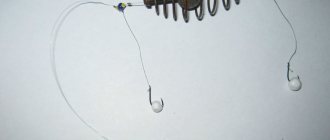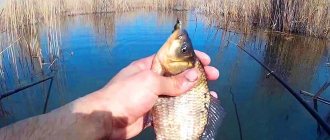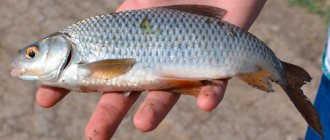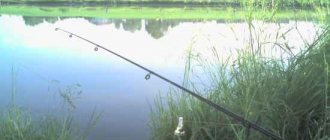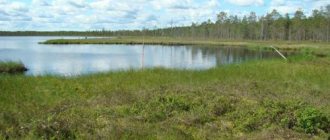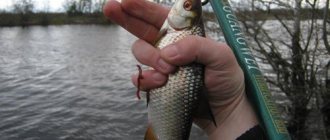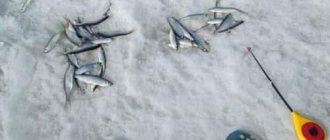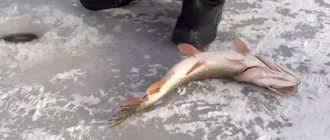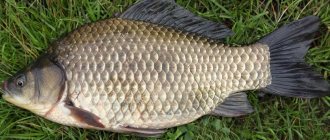With the arrival of spring, when warming begins in most reservoirs, the fish slowly become active. It can even be caught from under the ice. There was once an opinion that crucian carp fishing could only be successful in the warm season, in open water. But this statement has long been refuted by experienced fishermen who discovered crucian carp fishing in early spring. In the last few decades, in most rivers and lakes, crucian carp began to bite at the end of winter. He became more active and pleased anglers with a good bite, even under the ice. It is enough to follow a few simple rules and catching crucian carp in early spring will be no less successful than in the summer.
When does the crucian bite start in spring?
There is no exact schedule for what time in the spring and when crucian carp begin to bite and be caught. This depends on the region, the rate of warming and the behavior of silverfish in a particular body of water. The capriciousness of the bite of this fish is known.
However, crucian carp is not capricious; there are simply many possible models of its behavior, depending on the situation. It is thanks to its high adaptability that this Far Eastern brother of our European golden glutton has spread to all bodies of water and feels at ease there.
In some regions, fishing for silver crucian carp is not limited (using non-prohibited gear) - it is not included in the tables of permitted sizes and catch rates of fishing regulations. On the contrary, all kinds of catching of the hybrid (dushman) is encouraged, since the silverfish squeezes the eggs of valuable species of fish - bream, carp - out of their habitat and devours them. In the south, during the spawning run, it is caught in bags in rural areas as food for chickens.
Important points
S.T. Aksakov wrote that crucian carp begins to be caught in the spring later than other fish. But this applies to golden crucian carp - there was no silver crucian carp in the middle zone at that time, it spread here in the second half of the 20th century. In the south, the hybrid is caught from the ice in winter. In some reservoirs it can already be caught in March, immediately after the ice melts . These are the rivers of the Don, Kuban, Ural and lower Volga basins.
- According to the usual scenario, it is better to start catching crucian carp in early spring when the water warms up to a temperature of +10-12 degrees . In spring, the silverfish moves from the depths to the shallows, into the grass , and migratory schools rush upstream of the tributaries to spawn . At the same time, he begins to feed intensively.
- In some reservoirs in which the hybrid is active in winter, this rule does not apply. In rivers and large reservoirs, as well as their tributaries, near the mouth, the silverfish bites in early spring, even before the flood, in holes bordering the shallow water zone, where it will go with warming.
- Sometimes in some reed backwaters with depths of 1.5-2 meters, the hybrid has been standing since winter. The bite in early spring is passive, and the search for fish is more important, but bait in cold water can only collect nearby fish, within a radius of up to several meters.
- In ponds, the influence of water temperature on the silverfish's bite is more noticeable - crucian carp wakes up later, when it is already warm enough and green grass begins to grow on the ground, leaves bloom on the trees.
- Zhoring of crucian carp in spring is not a precise concept in time. For one flock within the boundaries of one body of water, it can begin abruptly, with warming. For the other, it grows gradually. Crucian carp bite in the spring unpredictably, even if theoretically everything corresponds to the necessary weather and temperature parameters. This is one of the behavioral features of this fish.
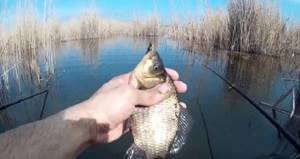
Even in the same body of water, different flocks are not similar in behavior. Over time, each of them develops its own feeding habits and movements in the water. There are times when during one fishing trip the bite stops with one bait and starts to take on a completely different one, and the fish are slightly different in size and color.
The reason is simple - the first flock left and another one approached the point. In addition to the changes visible to us, there are many other features in the reservoir that affect the spring bite of crucian carp. These are underwater currents, the phenomenon of thermocline, food migration, and discharge from bottom sediments.
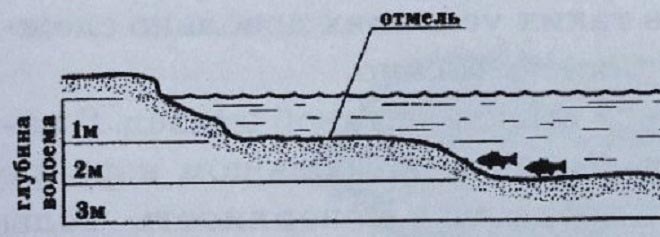
How to catch crucian carp in early spring in March and April
In some regions, when crucian carp are biting in the spring, both young and old go out to the reservoirs, filling the cages with rough donks and fishing rods. In other areas, especially in conditions of fishing pressure, each silver glutton needs to be hatched and waited - there it is few in number and cautious. It all depends on regional characteristics and the influence of weather seasonal changes.
Therefore, before you go fishing in an unfamiliar body of water in the spring, it is better to check with the locals about fishing times, baits, baits and other features. Therefore, it is possible to say exactly when you can go fishing for crucian carp only with reference to a specific area and body of water. In general, in the middle zone the period of active silverback biting in the spring is the end of April, May . In the south, the hybrid has been caught since the beginning of April, sometimes in March .
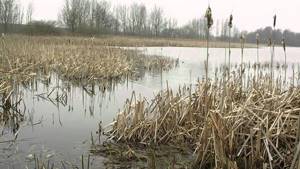
Crucian carp actively begins to bite when the water temperature is above 12 degrees , but in other places it is caught at +8, and in southern rivers sometimes in cold water, after the ice has melted. Every year, crucian carp wakes up and becomes active in the spring at different times - depending on the characteristics of spring changes in nature. In the warm water of canals and outlets of hydroelectric power stations and thermal power plants, silverfish can be caught all year round with varying intensity.
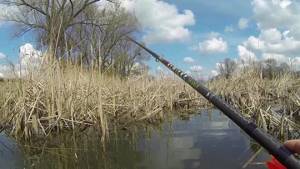
Bite in early spring
Under normal conditions, crucian carp begin to flock together at 5-6 degrees and move closer to the shore, stranded in the thickets. In bad weather and at night, it usually stands at depths of 2-3 meters next to overgrown bays, going out there to feed on daphnia, cyclops and other elements of zooplankton, and also to bask in sunny, quiet weather. The feeding pattern in early spring is passive, usually during daylight hours.
- The warmer it is, the more often silverfish can be found in the shallows, and less often in the depths. When the heat finally sets in in the spring (air temperature during the day up to +15, without frost at night), the crucian carp will most likely completely move to warmed up overgrown areas.
- If there are no thickets near the crucian’s camp where it can hide, but only shallow water with a relatively clean bottom, then, most likely, during the day it will stand under the edge, in a depression, and go out to the shallows to feed at night. This picture is observed in the spring in large rivers and reservoirs, which are not rich in aquatic vegetation and overgrown bays.
- Migrant flocks in the spring rise upstream into tributaries. If it is still cold during the flood, then the crucian carp moves slowly and feeds poorly. With warming, migration begins to become widespread.
- At the beginning of spring, the water warms up unevenly. And all this affects the bite. For example, on a quiet sunny morning there is a good bite. But if a cold wind blows and mixes up the water in a shallow bay, the bite stops. The crucian carp reacts to any changes in the weather in the spring towards cooling by worsening the bite. And vice versa - on warm, fine days he becomes more active.
- In quarries and deep ponds, crucian carp begin to bite later in early spring . If in basin river systems it is already actively moving, sometimes under the ice, then here it prefers to wait for warmth. The exception is shallow overgrown ponds in the south, which do not freeze completely. Here the silver can be active all winter.
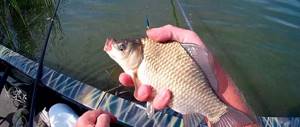
On large reservoirs in the south, crucian carp is caught in March from the ice (and in February) closer to the shore, near the mouths of tributaries. With the melting of the ice, before the water warms up and the floods, with which the entire mass of the hybrid rushes into the coastal reeds and up the tributaries, it can be caught in these places with a feeder or a donkey, and from a boat - with a side nod with a jig or a float rod. It can stand either in the riverbed under the bank edge or in quiet backwaters overgrown with reeds. More information about fishing for crucian carp in April
Spawning, late April - early May
When the water warms up in the spring to a temperature of +16 degrees, crucian carp begin spawning . Large flocks of silver glutton begin to rub in shallow thickets of reeds, cougars, reeds and cattails. Spawning of crucian carp can continue for a long time with varying intensity. At the same time, the bite in places where the silverfish migrated en masse in the spring does not disappear - only the females that directly spawn at that particular moment do not feed.
Individuals experience gluttony 2 weeks before and the same amount of time after spawning. Therefore, in some areas, the increased bite of crucian carp continues throughout May and part of June. In small bodies of water, spawning can begin and end within a few days, since the total number of fish is small.
It is impossible to say exactly when crucian carp begin to eat in the spring. Every year this happens at different times - you can roughly navigate according to the onset of spring warming. When crucian carp go to spawn in the spring, they feed intensively and indiscriminately. At this time they catch him with whatever they have. After the spawn, the zhor also turns on, which gradually fades to the usual summer bite in June.
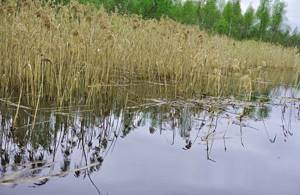
End of spring, May
May fishing for many fishermen is just a pre-spawning feast, spawning and subsequent outbreaks of biting with a smooth transition into summer. This is the golden time for catching crucian carp with any gear and equipment. The silverback is hungry and is not as capricious in choosing bait as in the summer when it is full and there is an abundance of food around. During this period, fishing for large spring crucian carp is available - adult individuals lose caution and fill their bellies, restoring strength after spawning.
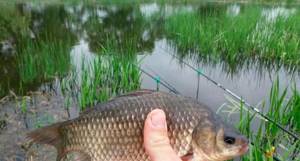
- At the end of spring, large baits, both animal and plant, work . It is in late spring that you have the greatest chance of catching a trophy silver crucian carp. With golden carp, approximately the same trends occur, only they occur later - from mid-May, since the main reservoirs in which this fish is still found are located in the middle zone, in remote places and forests, to the north.
- The minimum set of crucian carp in the spring is dung worms, maggots and canned corn , and aromatics are garlic and anise . By combining these baits and smells, you can almost always successfully catch the handsome May silver. However, if the number of crucian carp is not very large, then there is no food competition. Then there is no point in highlighting the bait - the fish will find it anyway.
- Under these conditions, large crucian carp are more selective in their diet. To seduce him, we use the entire available arsenal of baits and flavors. In warm water, porridge in bait based on peas, millet or pearl barley works well for hungry crucian carp.
- In the southern regions, pre-spawning food in the spring is usually the April bite. In the middle zone, active fishing for crucian carp in the spring usually begins in early to mid-May. Then the crucian carp begins to catch on ponds and lakes. The bite of crucian carp in a pond completely depends on the internal features of this reservoir. Even if there is already zhor in the rivers everywhere, the silver one on the pond can only begin to wake up.
With activation in some reservoirs, especially with a uniform topography and without thickets, it bites better at night, after sunset. The crucian carp simply feels uncomfortable on the bare sand and settles in holes nearby. It comes out to clean places and shallows at night or on quiet cloudy days, without sun. An article about fishing for crucian carp in May.

Choosing a fishing spot is one of the most important success factors
In early spring, depending on the type of reservoir, some ponds may still have fairly strong ice, and in some, it is already moving away from the shore and you can start catching crucian carp in open water. But how to catch crucian carp in early spring? This question interests many still inexperienced fishermen. Let's take everything in order, and let's start studying this issue from the most important thing - choosing a place. After all, the success of any fishing will largely depend on it.
When the ice broke
Fishing for crucian carp in March is not very different in fishing techniques from winter, with the exception of the behavior of crucian carp. Therefore, to choose a fishing spot, you do not need to rely entirely on winter fishing rules, since it is unlikely that you will already find schools of crucian carp at great depths. In the first half of March, fish begin to gradually leave their winter resting places and swim to those parts of the reservoirs in which the water becomes warmer and saturated with oxygen, and also where it is easier to find something to eat. These are, as a rule, shallow areas near the shore that warm up well, as well as areas with old reeds. In such areas you can find a lot of natural food, which is what attracts crucian carp here.
In open water, since it is still completely transparent, it is better to catch crucian carp without going into the water, but only from the shore, so as not to scare the fish with your presence. The ideal place is where the depth of the reservoir is about one and a half meters, there is aquatic vegetation, and the bottom is clay or silty.
Fishing for crucian carp in March - video
Ice fishing for crucian carp
During spring fishing for crucian carp on the last ice, you need to correctly decide on the fishing spot so that you don’t end up without a bite, and your neighbor, who is next to you at a distance of one meter, will fish out crucian carp one after another from his hole. Schools of crucian carp stay near a narrow channel zone, and places with various underwater snags are the most attractive for them.
Also promising are places near river mouths, near cracks in the ice, where melt water helps bring fresh oxygen into the reservoirs. Fishing for crucian carp from the ice in March is not so long, despite the fact that in some places the ice is still quite strong. However, you must be extremely careful, since the warmth of spring rays makes the ice very fragile and unsafe. It should be noted that crucian carp is not caught from ice in every body of water. If the reservoir is not deep and grass grows strongly in it in the summer, then there will be no bite in such a place until May. And when the pond is based on a clean river and crucian carp lives in it, then you can safely go to the last ice to fish for crucian carp. Moreover, during the ice fishing period, large fish are most often caught.
Crucian carp on the last ice: video
Baits and lures in spring
At the beginning of the crucian bite in the spring, we rely on delicate rigs and small animal baits - bloodworms, maggots, small worms. We use this approach on any gear. With warming and the beginning of activation, we enlarge the bait - we use larger hooks and put small bunches of worms or maggots on them . The small change may no longer allow you to use bloodworms.
Fishing for crucian carp in the spring during the period of feeding and spawning usually does not require the angler to use any special baits - you can use worms with maggots, as well as corn, mash, mastyrka, and pearl barley. Most often, the silver greedily takes large bunches of worms - the fish needs a lot of protein-rich amino acid food. However, if there is no food competition, the silver can be capricious, choosing what is tastier.

After spawning and feeding, the time comes for which the crucian carp has earned the title of noble whim. In warm water, it is impossible to theoretically say what crucian carp likes in the spring in this particular place. Even within the same body of water, different schools may have different feeding preferences. Here fishing is similar to summer fishing - varying baits, including vegetable ones, working with aromas and presentation of bait. As for dips, it is worth using not only garlic and anise, but a variety of attractants:
- Vanilla;
- Honey;
- Cinnamon;
- Kerosene;
- Star;
- Valerian;
- Any store-bought dips.
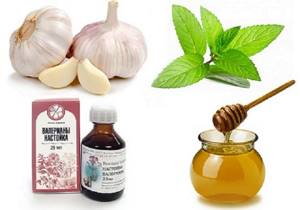
Other baits
Among the baits, in addition to the worm, corn and maggot, we use and try:
- Steamed or boiled pearl barley, wheat, whole peas.
- Canned green peas.
- Crumb of bread with halva, makukha, honey or dough.
- Talkers and mastyrki.
- Cat and dog food.
- For the flat method - boilies, pellets, silicone floating baits.
- On the donks - everything that is on the feeder, as well as a variety of sandwiches on foam plastic, cookies and ottomans.
- Bait animals caught in the hands - dragonfly larvae, leeches, mayflies, mormysh, Khrushchev, Chernobyl, caddis, small fry 2-3 cm.
- Catching crucian carp during the spring bite can be successful with unexpected baits - chewing gum, puffed rice, grasshopper, lard, shrimp meat.
In late spring we experiment and try what we have - the main thing is not to sit if there are no bites for a long time. The crucian carp moves a lot at this time and is actively looking for food. He will approach an object of interest from afar by smell. Detailed article about spring crucian carp baits:
https://rybafan.ru/rybalka/mirnaya-ryba/karas-vesnoj-nasadki-nazhivki
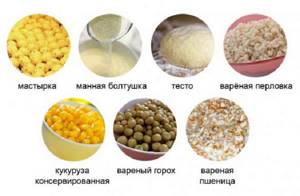
Catching methods of spring fishing
When fishing for crucian carp in the spring, take into account the recommendations of experienced fishermen friends, as well as your personal experience collected over the years of fishing. If it is missing, start experimenting and look for something universal.
As soon as you find yourself on a pond and select several promising places for fishing, feed 2-3 different places at a distance of 20-30 meters from each other. Do not forget that in the spring crucian carp is extremely cautious, so it rarely takes the bait on the move, forcing the fisherman to wait for the right moment. Also, the fish constantly moves from one place to another, appearing either in the upper layers of water or in the most inaccessible areas. Sometimes a fisherman has to use complex manipulations and techniques that allow him to lure out the prey without spooking it.
Plug fishing rod
This rod is designed for precise and accurate delivery of bait to the right place, which makes it especially effective for spring fishing. However, for the upcoming fishing to be successful, preference should be given to fairly rigid models.
When equipping the selected form, use a thin fishing line with a cross-section of 0.8−1.2 mm . As a float, you can use a goose feather or a model with a load capacity of no more than 0.7 grams. When plug fishing, special fishing tactics are used:
- Immediately before starting fishing, about two hours before, you need to feed 5-6 different areas, and then start fishing them.
- After placing the bait on the hook, with extreme care and without splashing, you need to deliver it to the right place, and then carefully monitor the behavior of the float.
- If after some time a quick bite follows, and then a second, third, etc., then you are in the right place, and there are a lot of fish here. If the bite is not particularly active, try changing the place and fishing technique.
- Explore all horizons of the water, both when float fishing and when fishing with a jig. Biting happens at any depth, so be prepared for any, even the most unpredictable incidents.
To catch a trophy fish, you must demonstrate good fishing skills and faith in your abilities. Fishing with a jig is really very difficult.
Fly rod
A fly rod is an effective fishing tool for finding crucian carp in a small area. It’s no secret that this type of gear does not have a reel, so the fishing line here is exactly the length of the rod. When choosing a float, use long and thin products, while the length of the rod itself should be 4-7 meters, depending on your preferences and fishing location.
Fly tackle is popular due to its ease of use. Fishing with it is really very convenient, while the fisherman can independently remove the windage of the fishing line and easily control the overall process. With the help of a fly rod you can quickly change the fishing area and chase a school of moving crucian carp. In this case, it is not necessary to use too much bait - it is enough to periodically throw small balls with the mixture into the water. You can fish until the water warms up very much and the crucian carp goes to depth.
Match tackle
Another popular fishing invention that works especially well when fishing for crucian carp in the spring. Here the fisherman needs to decide on the length to which he will have to cast the tackle, following the algorithm : the higher the indicator, the longer the form. The universal version has a 4.2-meter length. As a reel, it is better to use models with a soft and reliable friction brake. The line must be wound evenly, otherwise there is a risk of formation of beards and complex knots. The float can be taken fixed.
For match gear, special types of fishing line are used. They should be black and easily sink in water. As soon as the water temperature rises to certain levels, and schools of crucian carp quickly move away from the shore, that’s when you can start using a match fishing rod.
Working with bait in spring
When going fishing for crucian carp in the spring, you definitely need to think about the issue of bait. In early spring, crucian carp mostly stands, and no bait can attract it from large areas. It is better to rely on an active search to get the tackle into the fish. If we feed them, it is done extremely carefully, with finely divided food with an inert structure , so that they do not create too much dust and lie on the bottom in an even layer. You can add a little bloodworms or chopped worms if the roach does not commit atrocities.
To catch crucian carp in cold water in the spring, bait may not be needed at all. It’s better to search with a fishing rod, jig, or bottom tackle. Only if the bite has started, for example, on a sunny warm day, you can add bait to slightly activate the sleepy fish.
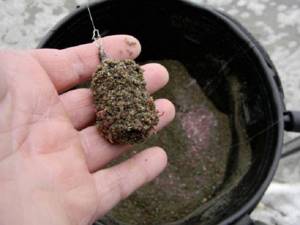
Fine grinding for early spring without feed particles (feeder)
By active bite
As the weather gets warmer, we increase feeding. We throw in more bait, gradually add large and tasty food particles - millet, pastoncino, pearl barley, chopped corn, worms, maggots. After spawning, it’s time for hungry crucian carp - during this period we feed the points generously using nutritious cereals and high-calorie bait. You can use store-bought or homemade mixtures, mixing them with boiled millet, pearl barley, and corn. The simplest recipes:
- Boiled millet, pearl barley mixed with store-bought bait, breadcrumbs, ground pig feed.
- The same thing, based on pea or mashed potatoes.
- Sunflower cake with porridge, but only in reservoirs where crucian carp react to it. The general trend is that in the south crucian carp goes well for makukha (cake), and in the middle zone breadcrumbs, ground rolled oats and cookies and gingerbreads work better.
- If we fish with Bonduelle corn, pour juice from a jar into the bait and add crushed grains.
- The best additive is chopped dung worm, if it is available in abundance.
- We add sweeteners, enhancers, molasses, betaine, amino acid complexes - in accordance with the tastes of the fish in a particular reservoir.
We work carefully with dips and flavors in bait. It is better to work with natural flavors and ingredients. We add a little additional flavorings to the food only if they definitely work in this body of water. Read more about spring bait for crucian carp
https://rybafan.ru/rybalka/prikarmlivanie/prikormka-na-karasya-vesnoy
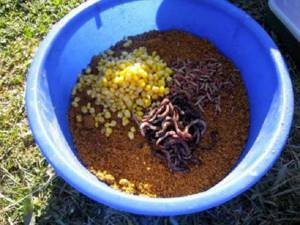
What to feed crucian carp in early spring
The last ice is perhaps the most fertile time for crucian carp fishing lovers. After all, you can enjoy not only the fishing process, but also the first, slightly warming rays of the sun, beautiful clear weather and watching nature wake up after its winter sleep.
After we have found that very cherished place for fishing, we can begin this wonderful, soul-warming process of fishing. Every novice angler asks the question: what to use to catch crucian carp in March? There is no clear answer to this question. Crucian carp is very picky, and it is almost impossible to predict its appetizing mood, since it depends on many different factors.
Among the reservoirs there are places where in early spring crucian carp bite well on a naked playing jig. Such a bite can be much more intense than even the most attractive bait for crucian carp. In such cases, you cannot do without bait; it will become an integral part of fishing. But you need to feed the crucian carp in moderation, since heavy feeding of the crucian carp in the form of a large cloud descending from above can scare away the crucian carp. It is enough to pour the bloodworm into the hole in small parts, while simultaneously lowering the jig at approximately the same speed as the bloodworm. When playing this way, the crucian carp mistakes it for falling animals and the bites become quite confident.
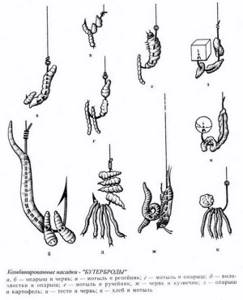
If fishing for crucian carp on the last ice is still carried out with a bait, then you can put three or four large bloodworms on the hook. Of particular interest to crucian carp are also various sandwiches made from bloodworms: with burdock moth larvae, with Chernobyl or with maggot, although the bite with the latter bait option is slightly worse. During this period, crucian carp are attracted to softer and smaller larvae. Chernobyl is a very good bait, which crucian carp eat with pleasure on the last ice, but you need to take care of its preparation in advance. In the spring it is unlikely to be obtained anywhere, so Chernobyl is often prepared in advance. To do this, in late autumn, they tear off the stems of wormwood, split them and take out the larvae from there. Place in a jar and put in the freezer until early spring.
In addition to using animal bait, catching crucian carp on the last ice can be done using regular summer complementary foods based on bread and porridge. Also, due to the presence of ice and the absence of currents, ground and breadcrumbs can be used. This bait is lowered into the hole in small portions, and feeders are used at great depths.
If we catch crucian carp in early spring in March, then in addition to bloodworms, we can use worms and maggots as bait. True, we should not forget that crucian carp is very capricious and picky. He may easily prefer baits made from semolina, peas, etc. Therefore, when fishing for crucian carp, always take with you a variety of baits and lures of animal and plant origin.
Tackle for spring crucian carp
The main methods of catching crucian carp in the spring:
- Float rod;
- Side nod and jig;
- Feeder;
- A variety of bottom gear - regular rigs, springs, crucian carp killers, plugs and nipples with foam on hooks.
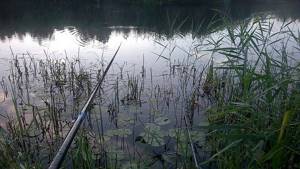
Fishing with a rod
Features and specifics of catching crucian carp on the river in the spring with a fishing rod:
- In early spring, we carefully equip fishing rods for crucian carp with thin leashes and small hooks. Any usual tackle will do - match, plug, Bolognese, fly. It all depends on the preferences of the fisherman and the characteristics of the reservoir.
- It is easier to fish with a fishing rod in small rivers, ponds, reclamation canals and clearings in peat quarries. On rivers in early spring we fish pits and dumps, exits from pits, and with warming - the entire overgrown coastal zone, windows, places with a return path, quiet shallow bays. During the course of crucian carp - the riverbed near the shore, on the edge or border with reeds.
- The best equipment for a float rod for crucian carp in cold water in the spring, as well as for capricious, well-fed fish closer to summer, is neat small sensitive floats with appropriate weight, 1-2 grams or a goose feather. For active fishing, especially in reeds, do not go too thin with the equipment, use fishing line 0.18 or more, hooks No. 8-10. Even large crucian carp bite greedily, and fish need to be pulled out of the grass as quickly as possible after hooking.
- Match rigs with floats with long rising antennas work well. The match can be used to fish points located 20-40 meters from the shore.
- On large shallow floods with reeds in reservoirs, it will be successful to catch crucian carp in the spring from a boat, in the windows among these thickets.
- The float allows you to quickly change the fishing horizon. In the spring, crucian carp often take it not from the bottom, but on a falling bait or in the thickness.
- In zhor, if the place and baits are known, fishing for crucian carp with hand-made gear from any old telescopes with rough fishing lines and large floats will be successful. The main thing is to choose the exact time, place, weather, bait and groundbait.
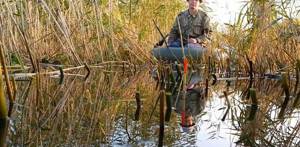
Donka
For fishing for large crucian carp in early spring, you can use ordinary donks with a sinker and hooks. Bait in clean cold water based on cereals does not yet work. It is better to use tactical search, re-throwing gear to different places.
Where bites are observed, you can feed with an inert fine mixture. Fishing for crucian carp in the spring at water temperatures below +6 degrees with donks is carried out in deeper places, under the edges and in holes .
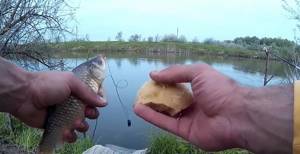
With warming, when crucian carp move to overgrown shallow waters and bays, porridges begin to work normally. In such places you can use both ordinary donks, with retractable leashes and a blind sinker at the end, sliding feeders (such as a watermelon), and a variety of nipples, plugs, crucian carp killers, springs with rocker arms .
During the period of spring activity, crucian carp willingly takes foam plastic over a feeder with porridge, especially in the current. Instead of foam plastic, you can try placing ottomans or cookies of various colors and flavors on the hook. The standard attachment is a bunch of red dung worm . An article about the secrets of catching crucian carp using donks
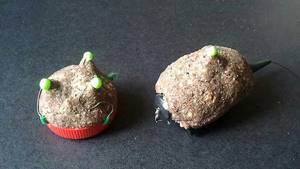
Fishing tactics
Catching crucian carp from ice in March is quite an interesting activity, especially since it is much easier to catch this way. Each hole requires an individual approach and if there is no bite, do not rush to move to another hole. Try several types of jigs and only when none of them brings effective results, try fishing from a new place.
For jigs to give a good result, it is necessary that the way they move in the water closely resembles the behavior of real live prey. As a rule, when playing with a jig, a bite occurs when its movements are suspended or it completely sinks to the ground. Usually, crucian carp bites are barely noticeable, so you need to hook at every hint of them.
To summarize, we can draw general conclusions about how to catch crucian carp in the spring:
- Take into account the fact that spring is not always the right time to catch crucian carp in the spring. Despite the fact that under a still thick layer of ice, the weather is relatively constant, the air temperature outside and other factors still influence the bite. For example, stable warm air temperature always increases the activity of crucian carp and has a positive effect on the bite;
- Successful fishing for crucian carp from ice largely depends on the correct choice of fishing spots;
- To please this fastidious predator, you need to try different types of jigs. So, in some cases, only nymph jigs of certain types can bring success, and in some cases, only devil jigs, also of various types;
- When using natural baits, remember to experiment with different types, both animal and plant based. The same principle must be adhered to in cases with lumps;
- The choice of equipment for crucian carp on the last ice depends on the personal preferences of the fisherman, his experience and skills.
Video - catching crucian carp in spring (early)
Fishing for crucian carp in early spring: video
Video - catching crucian carp in early spring
Video - fishing for crucian carp in early spring
Catching crucian carp in early spring: video
Fishing for crucian carp in early spring - video
Feeder
In feeder fishing we focus on the same principles. In early spring we fish deeper, further, on holes and edges.
- With warming - in the reeds, shallow bays, small rivers , where the running crucian carp rises.
- In small rivers, it is better to throw the equipment under dry reeds or overhanging vegetation on the opposite bank.
- In spring, crucian carp on the river usually walks somewhere in the coastal zone, in the thickets.
- In order not to catch under your feet and not to frighten a large hybrid with fussing, we throw it under the opposite bank or along our own under the edge of the old reeds.
- The best option is to choose an area of thickets on the other side, with no approaches to the water on that side, and throw the feeder there.
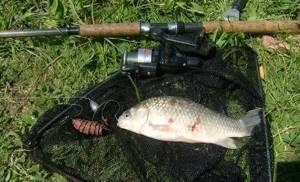
Feeder fishing is tactically designed to feed one point and constantly accurately cast to this place, with the line clipped in the reel spool along its length. For catching crucian carp in early spring, sliding rigs work better , while the quiver tip is not cocked - to allow the crucian carp to make the first pull without hindrance.
During the pre-spawning bite of crucian carp in the spring, any equipment works - paternoster, helicopter, asymmetrical loop. The principles of working with groundbaits and bait are no different - in cold water there is a finely dispersed inert mixture and small animal baits, after warming up - a rich feeding with grains, we select baits from the reservoir, including vegetable ones. Learn more about where to look for and catch crucian carp in the spring on a feeder.
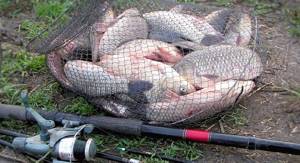
On the jig and side nod
Fans of the side nod believe that a fishing rod with a jig is the most catchy tackle for crucian carp in the spring. Jigs and floats are often tied for fishing in reeds. Tackle with a side nod, especially from a boat, allows you to catch favorite crucian carp sites, continuous thickets of reeds and small windows or clearings in them .
You can start catching spring crucian carp with a jig in the reeds as soon as the ice melts. No bait is used - we walk more and explore new points with a jig. For those that worked, it makes sense to come back after a while and check again. Article about spring fishing for crucian carp with a side nod
Subscribe to the channel:
YouTube channel RYBAFAN
We are VKontakte
How to catch crucian carp from a boat
Boat fishing is a very productive way of searching for trophy crucian carp, which allows you to sit comfortably among thickets of aquatic vegetation or in the reeds, throwing gear into the so-called “windows.” This is where the largest representatives of the species are found in the spring, so you won’t have to wait long for them to show good activity. In addition, you can throw a few balls of a good bait mixture into such clearings.
When boat fishing, it is customary to use a small float tackle, although a jig also works well. You should place a worm on the jig and lower it into the clearing in the reeds to the very bottom. Once the bait is in the right place, begin to slowly pull it up, slightly shaking the tip of the rod.
If the worm is within the viewing radius of the fish , then it will not refuse such a delicacy and will immediately pounce on it. The bite can be very sharp and unpredictable, so be careful. Unlike classic float tackle, a jig requires increased responsibility and does not allow you to relax.
Among the disadvantages of boat fishing is the high risk of scaring away the crucian carp with a large swimming device. Having noticed it , the fish will immediately go deeper and be careful. Therefore, whether to fish from a boat or not is up to you.
Secrets of fishing
There are several secrets to help you achieve your desired catch.:
- Opposite shore effect . When casting the tackle under the opposite bank, the likelihood of catching a trophy increases. It is here that a trophy crucian carp can be caught on a fishing rod in the spring when it begins to bite our desired object of hunting.
- Two centimeters . For capricious fish, even a slight change in the depth of the bait plays a positive role in its capture.
- Live bait . If activity disappears, you can move the float a short distance using a fishing rod. Often after using this technique a bite follows.
- Geyser . If bottom gear is used for fishing and the performance begins to decline, effervescent tablets added to complementary foods can come to the rescue. When it comes into contact with water, a gas is released, rising to the surface in bubbles and attracting fish.
- Crucian carp trails . In deep water bodies, fish move along certain routes. They are called paths. Having found the trail, the fisherman is sure to achieve a record-sized catch.
There is a secret to catching a really big trophy.
Large crucian carp are disturbed by their smaller relatives. They are faster and the first to take the bait off the hook and do not give it a chance to be caught. But there is a way out. First, you need to feed one point a little, then move to the side and feed the second point. All the small stuff will go to the first point, and large specimens will get their chance to be caught at the second point. Article on the topic: Hooks for crucian carp

